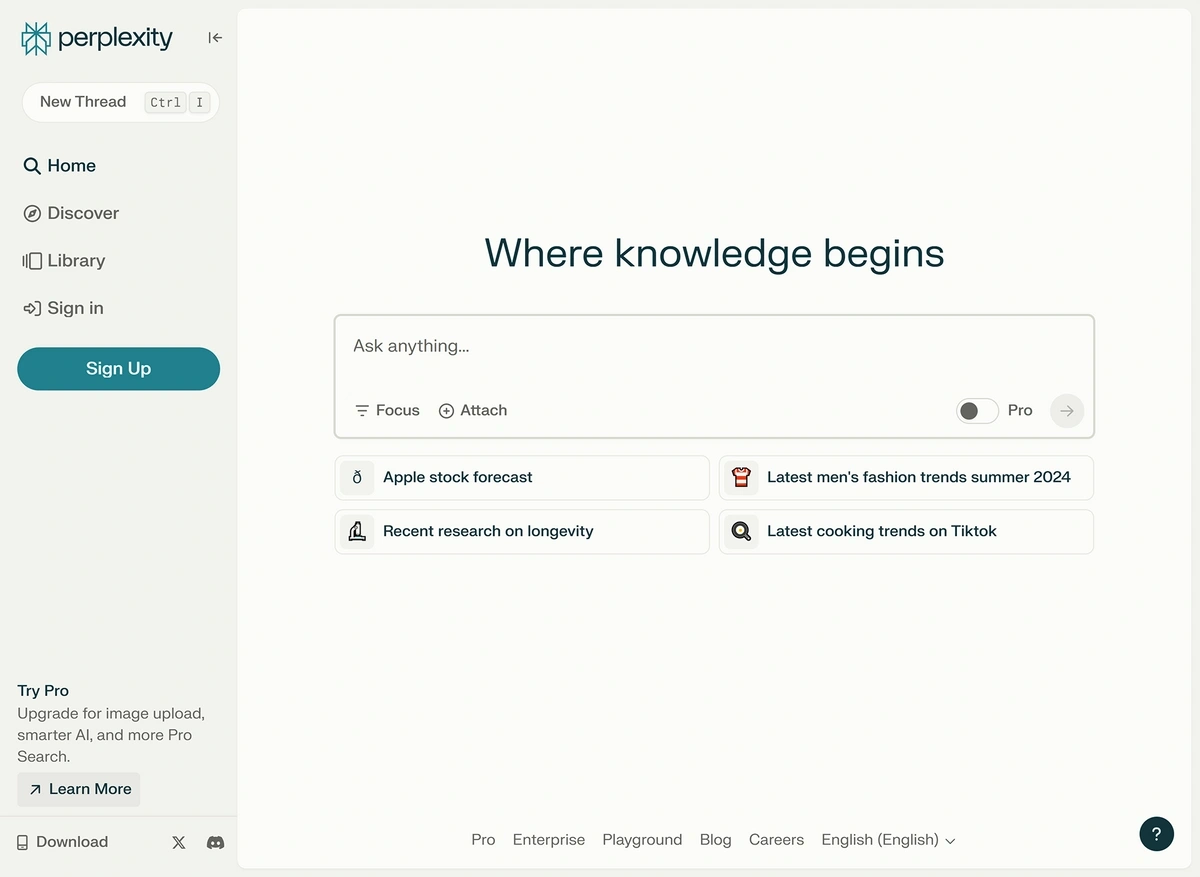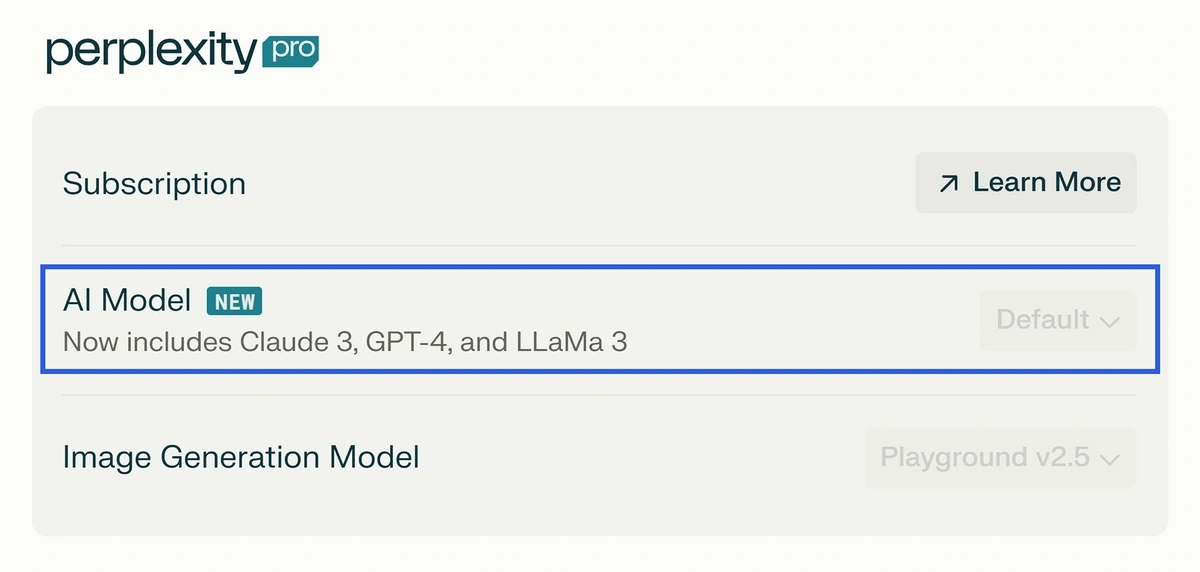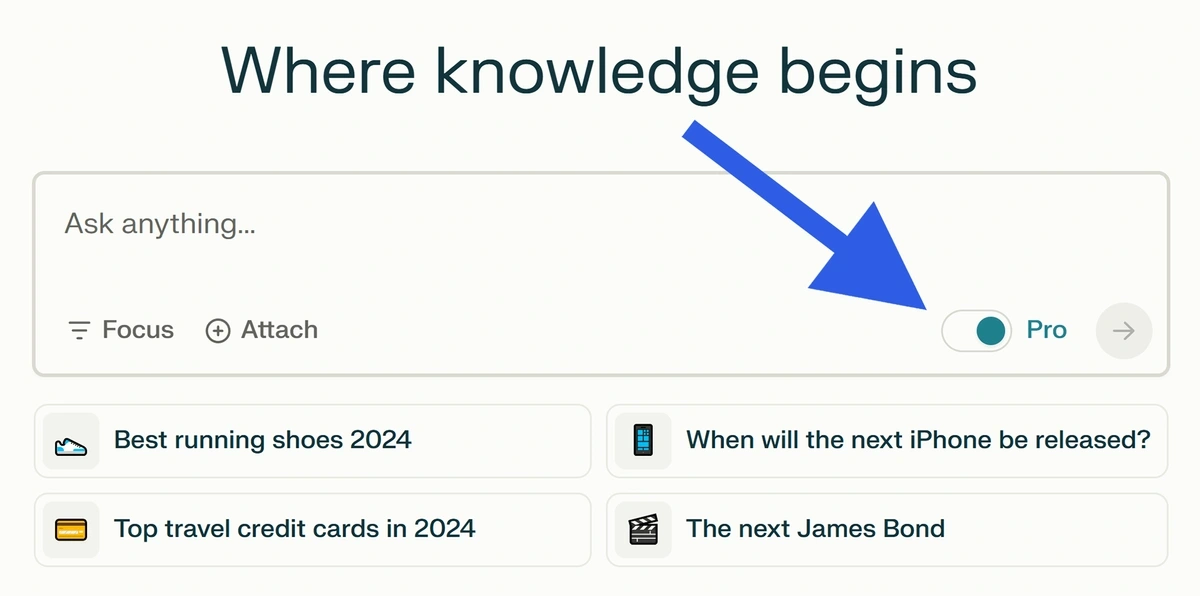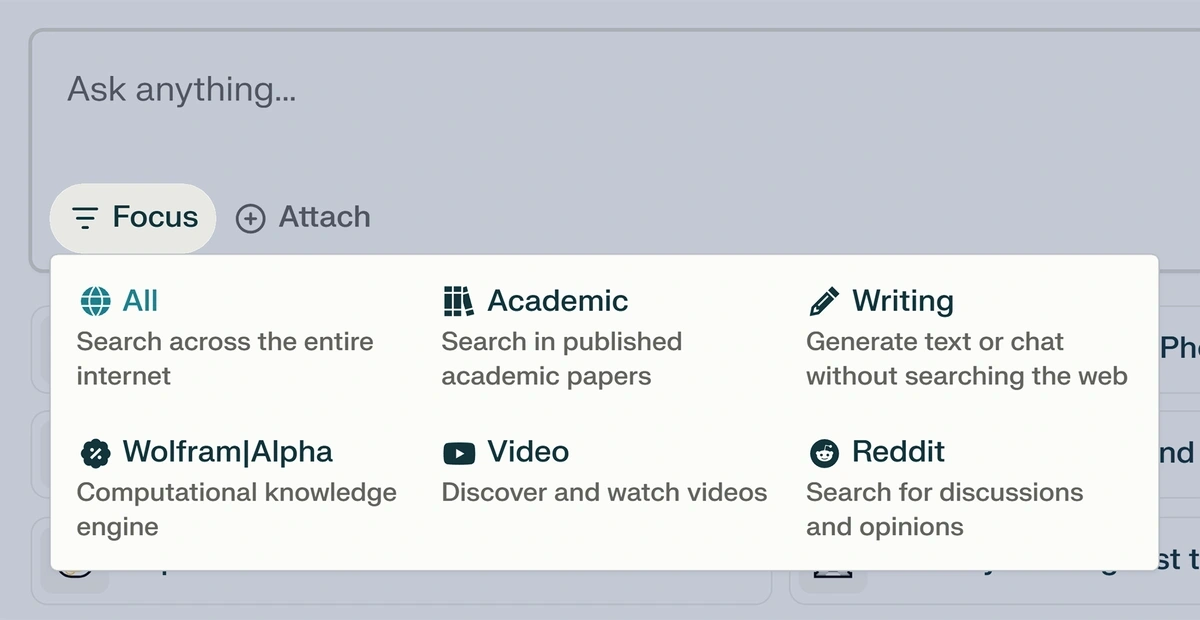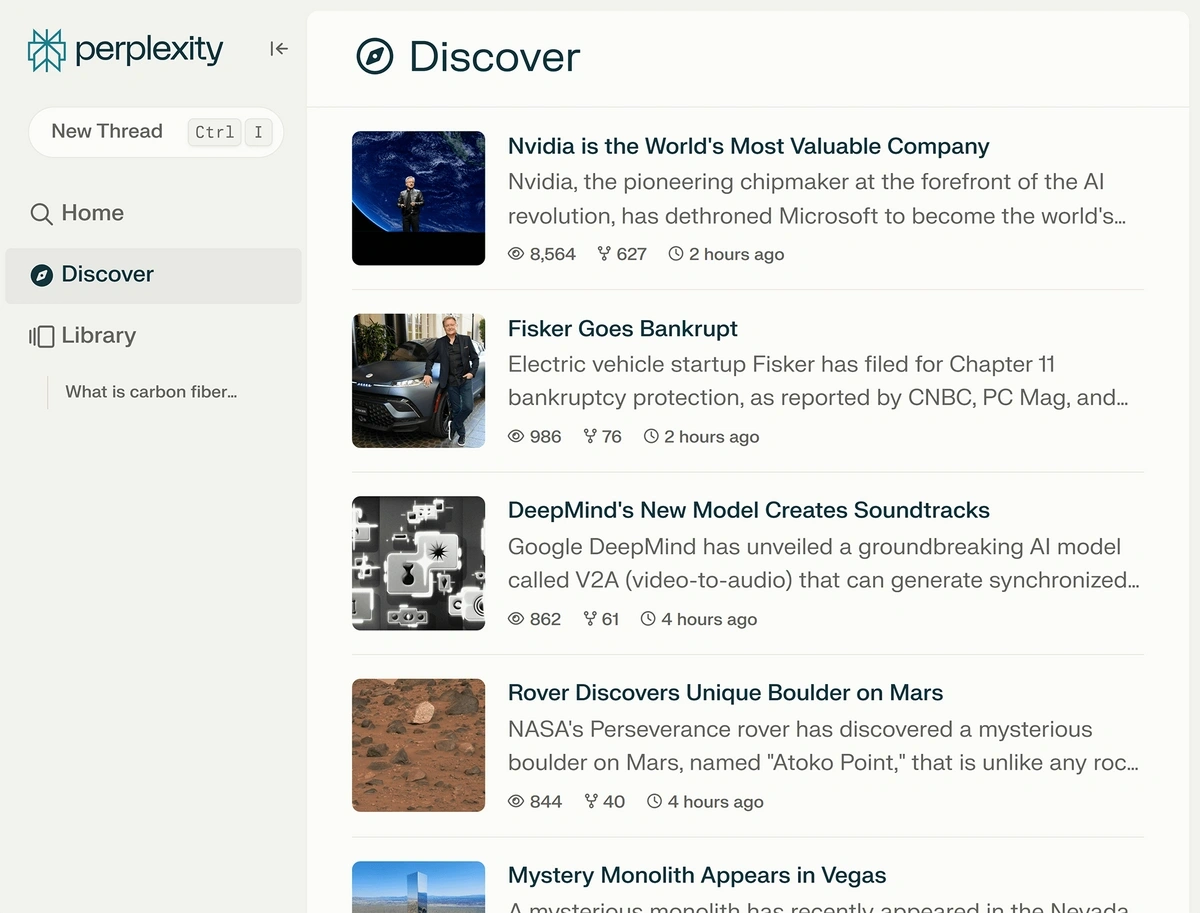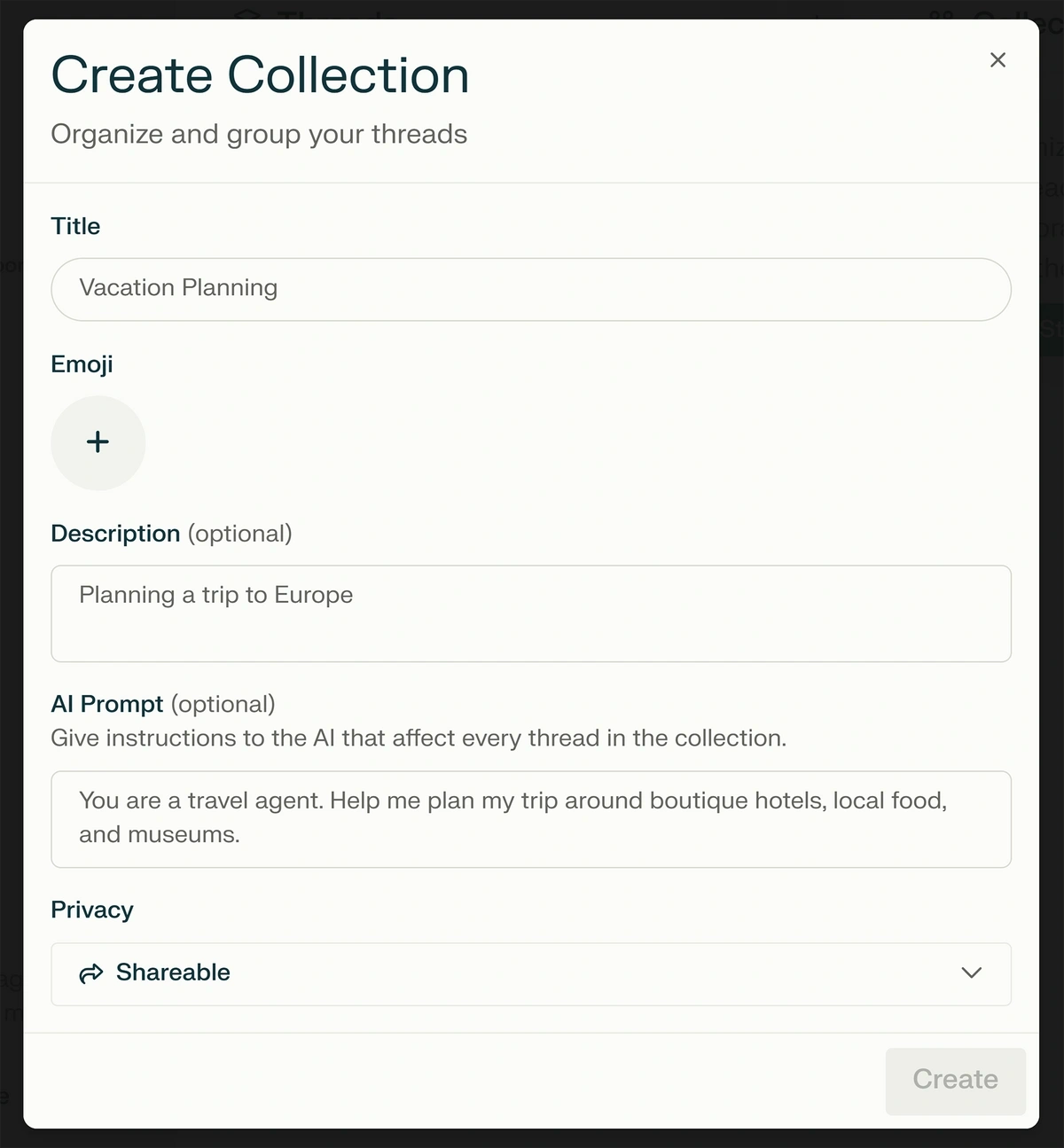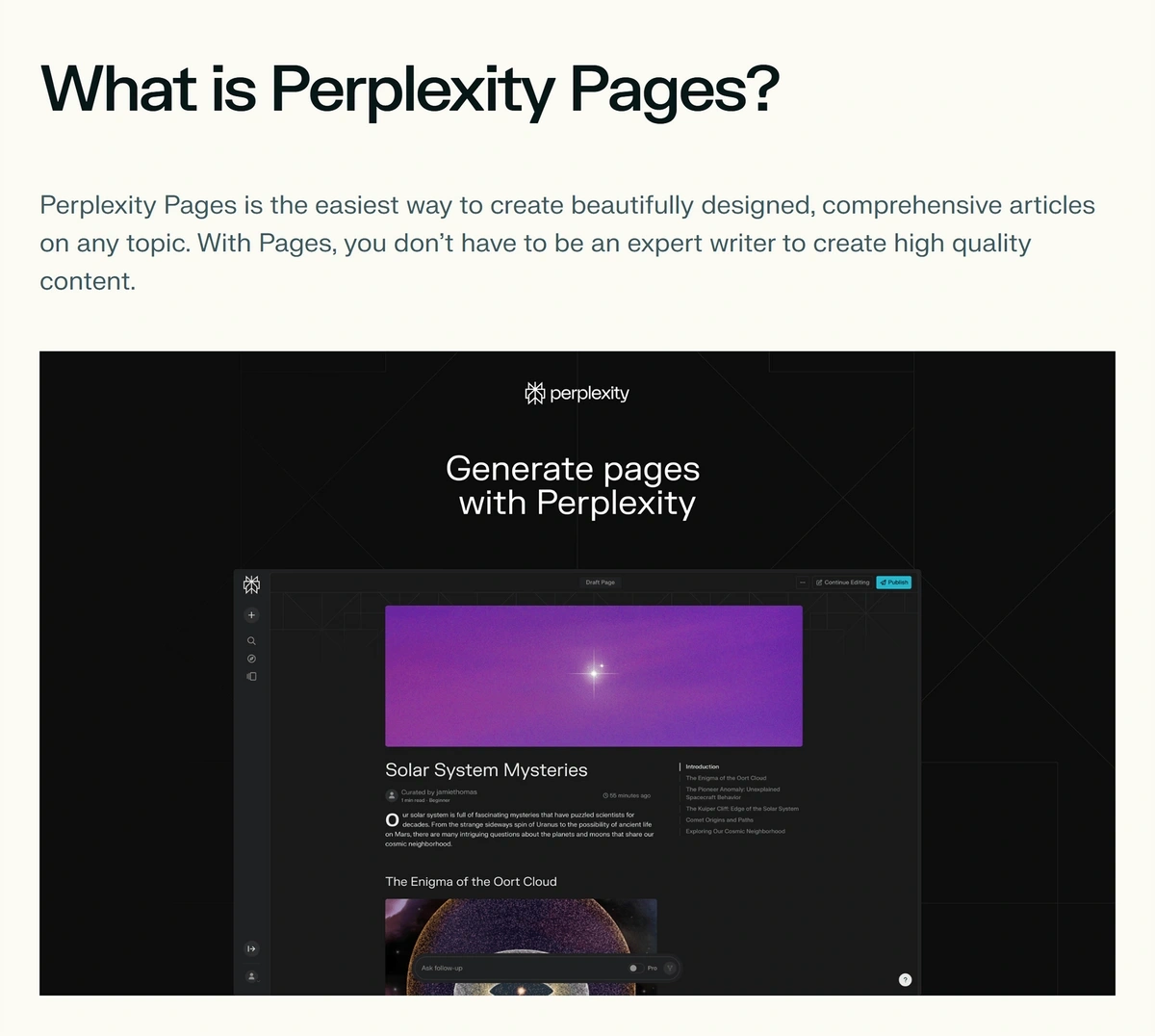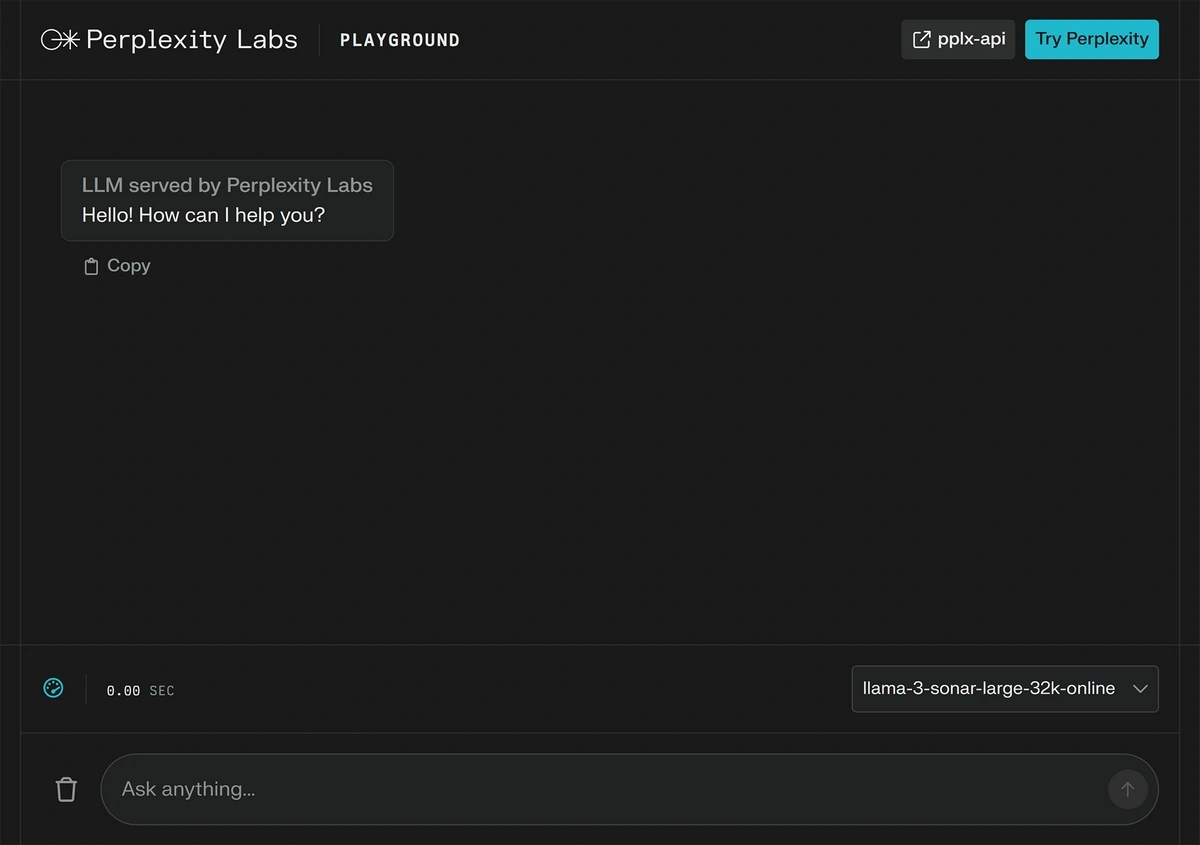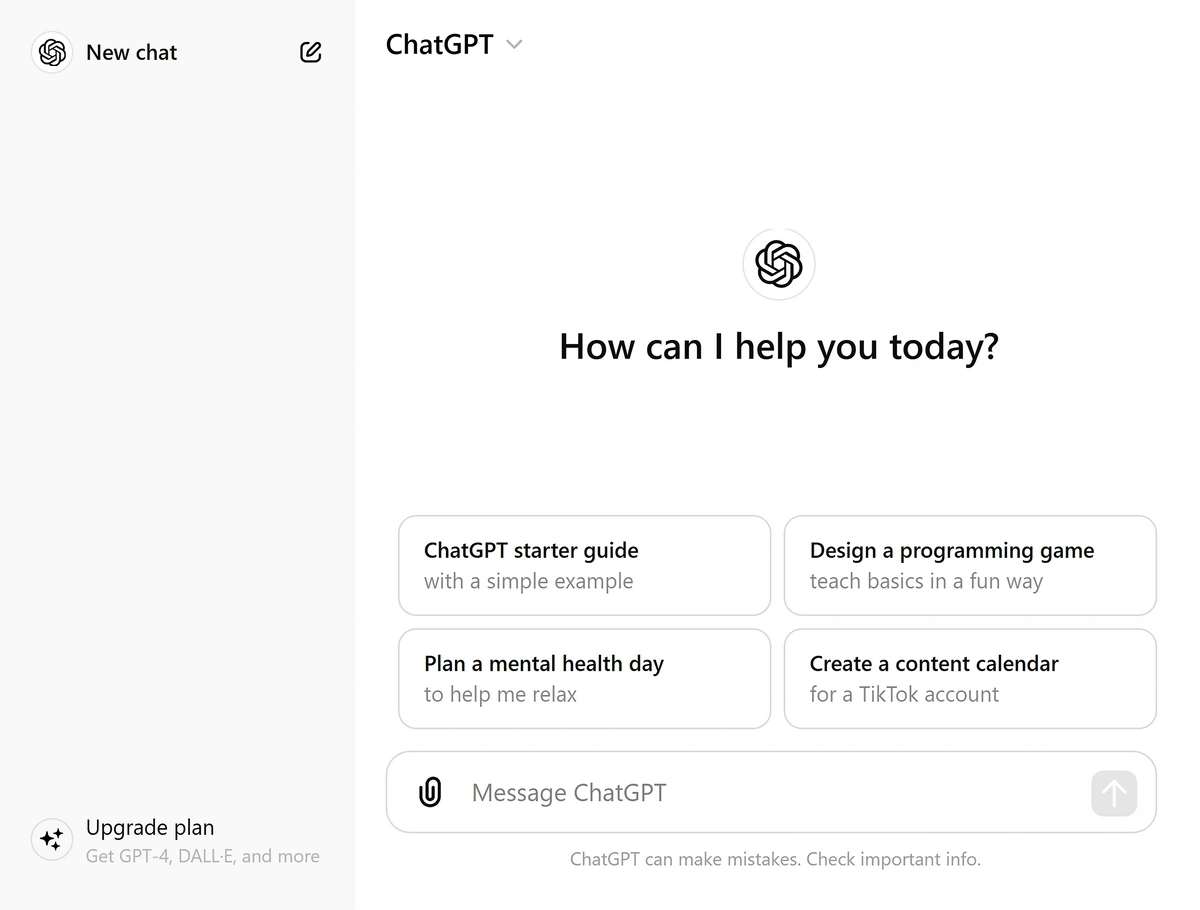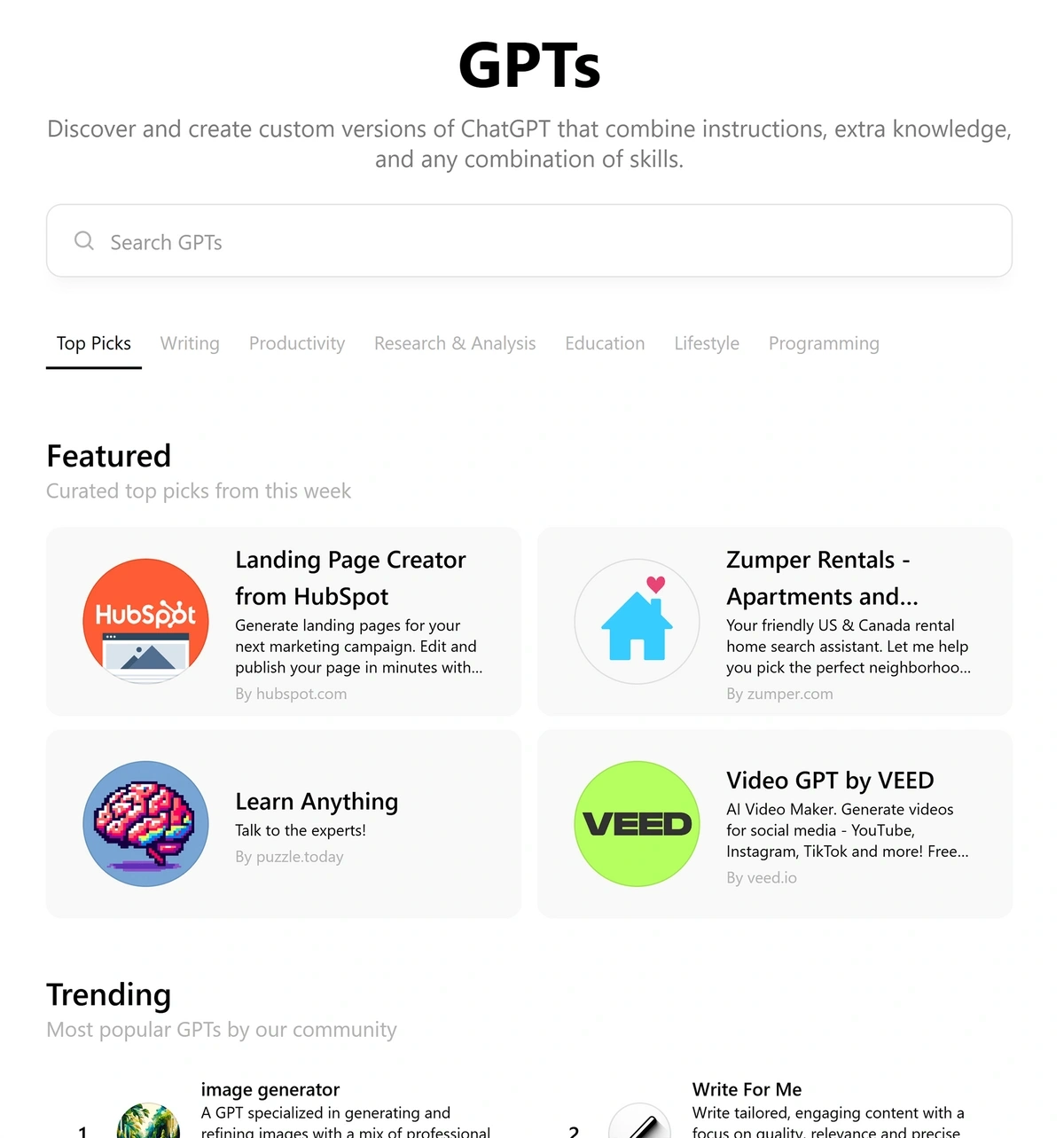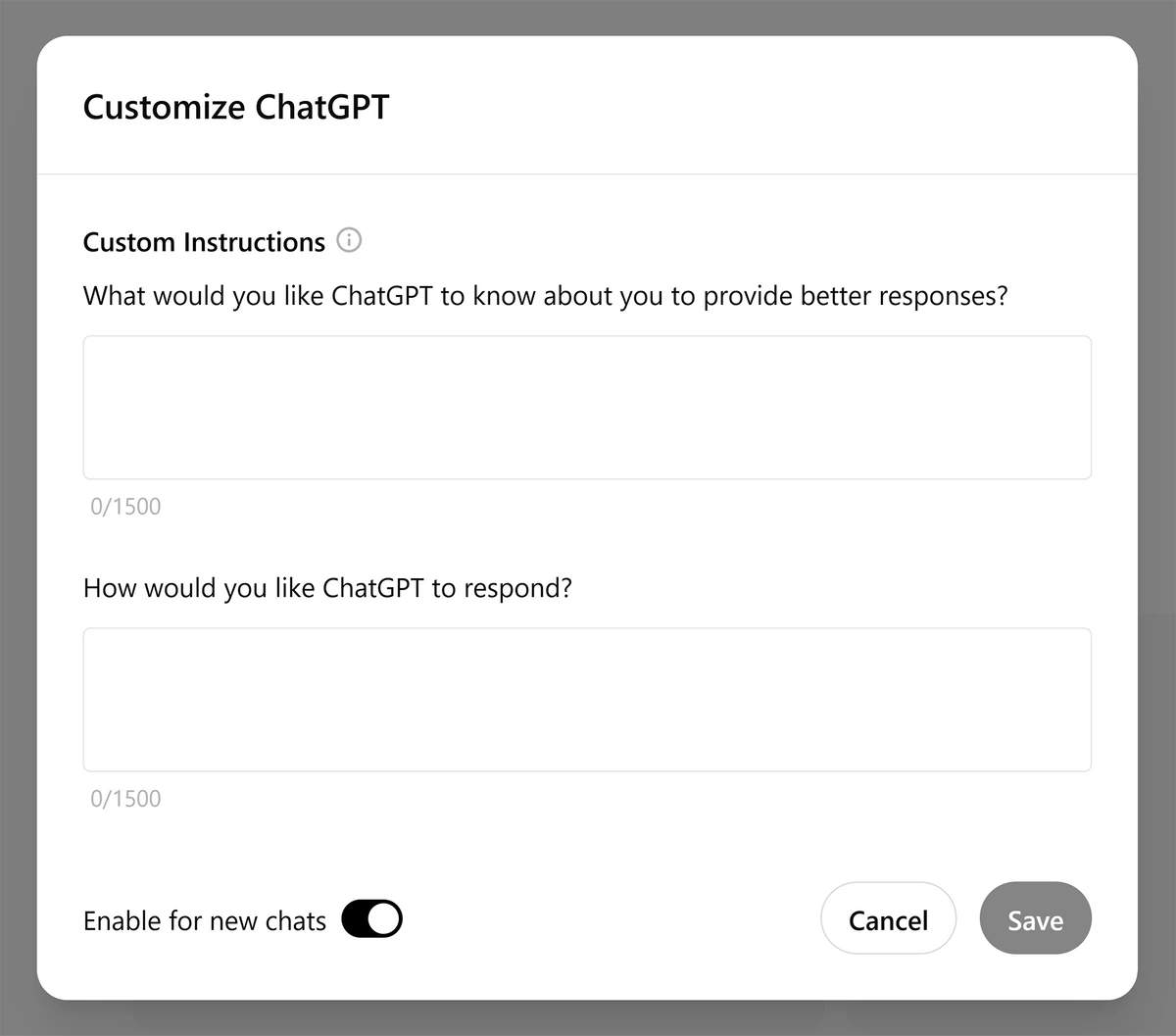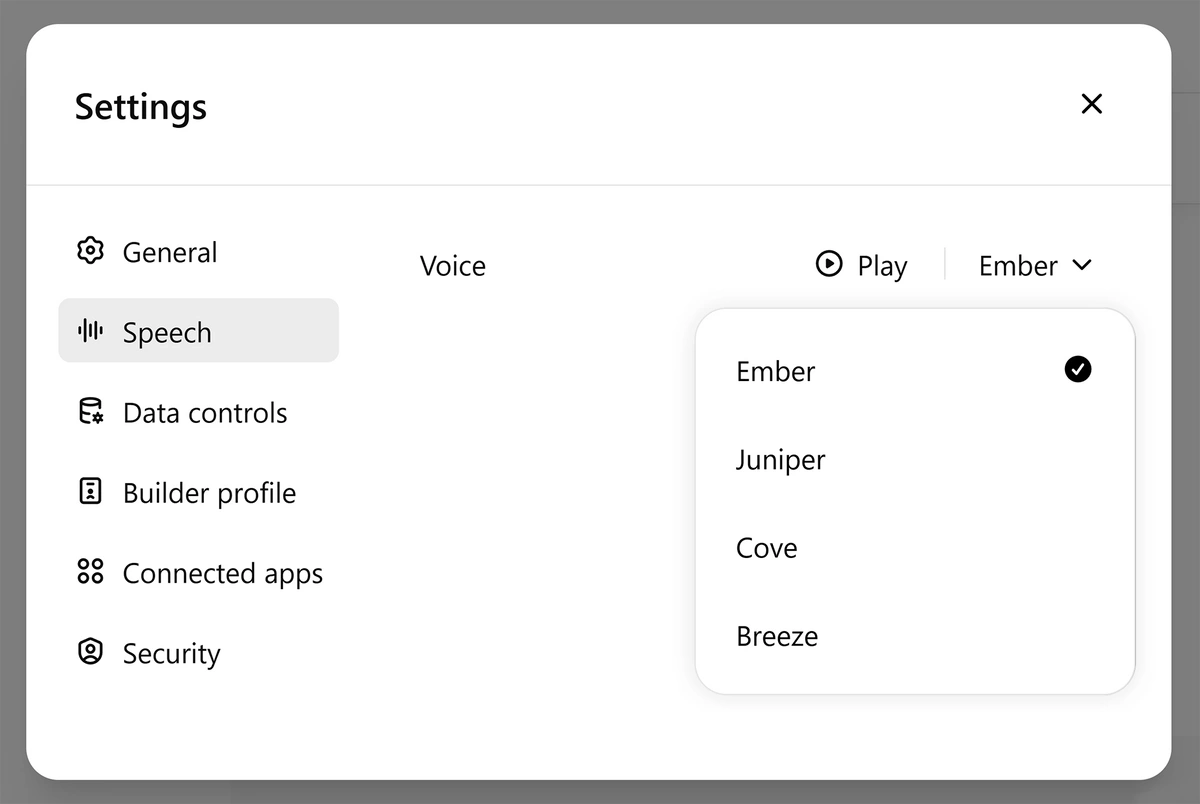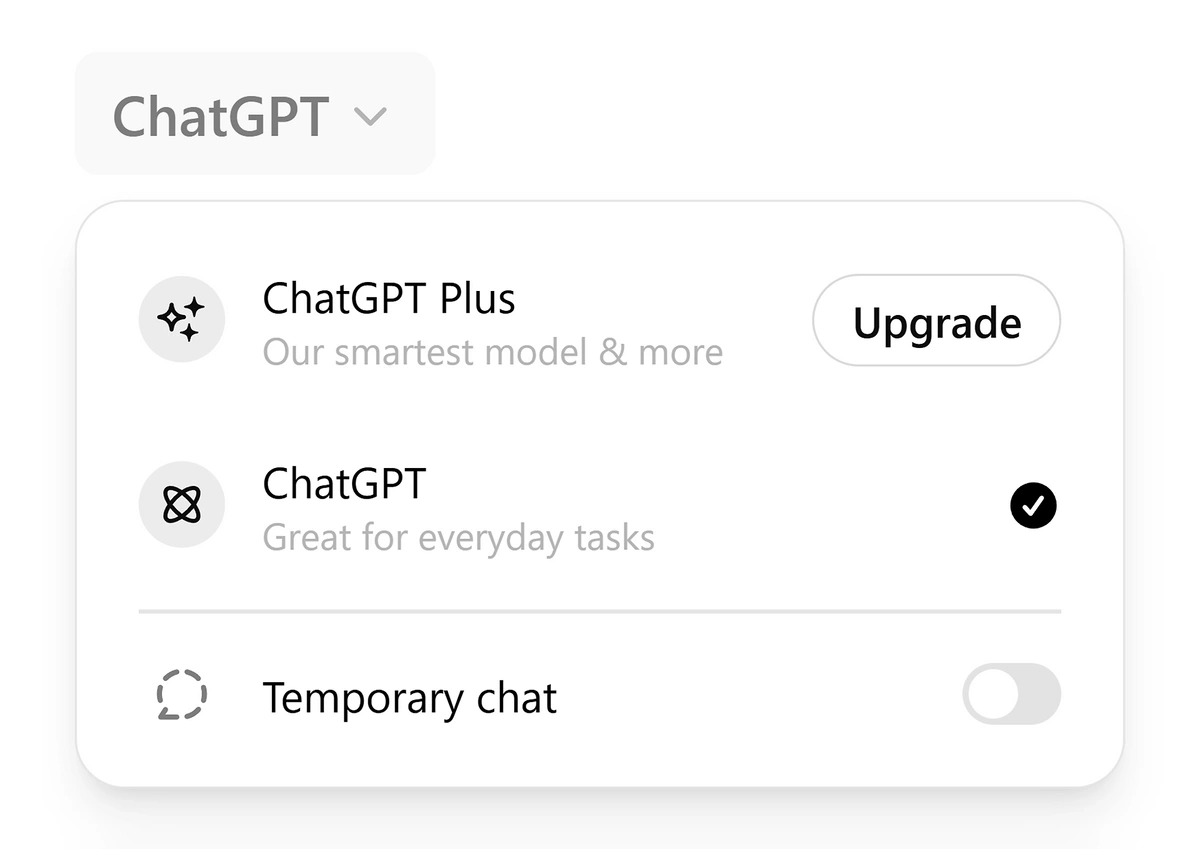
Perplexity AI vs. ChatGPT: AI Chatbot Comparison
This is an in-depth comparison of Perplexity AI and ChatGPT.
Both are powerful, free-to-use conversational AI tools that use machine learning algorithms and natural language processing to respond to queries and prompts in real time.
This guide examines these two AI powerhouses in greater detail to help you determine which conversational AI tool best suits your needs.
| Perplexity AI | ChatGPT | |
| Key Differentiators | Contextual search capabilities, accurate information retrieval with cited sources, access to multiple advanced AI models | Advanced conversational agent, trained on a broad knowledge base, provides human-like responses with creative content capabilities |
| Best For | Accurate, context-aware research with cited web sources | Conversational, engaging, human-like dialogue, and reasoning |
| Target Users | Researchers, students, and professionals | Creative and business professionals, general users for content creation |
| AI Models Supported | OpenAI o3-mini, Claude 3.7 Sonnet, Sonar, DeepSeek R1 | All current OpenAI models |
| API Access | Sonar Deep Research, Sonar Reasoning Pro, Sonar Reasoning, Sonar Pro, Sonar, DeepSeek R1-1776 | All current OpenAI models |
| Data Accuracy | Pulls from Google and Bing searches, academic papers, WolframAlpha, social media platforms, and forum discussions | Retrieves data from the Bing search API and its pre-trained knowledge database |
| Conversation Capabilities | Allows for follow-up questions but less conversational because of the structured, information-centric responses with source citations | Better for conversational queries because of the engaging, human-like dialogue and context memory for coherent, ongoing conversations |
| Pricing | Free forever for basic use, with 3 Pro searches per day; $20 per month for Pro members, includes 300+ Pro searches per day | Free forever for basic use; starting at $20 per month for Plus members |
Perplexity AI Overview
Perplexity is a conversational AI search engine where users can ask questions and get accurate answers in real time.
The platform uses various natural language processing and large language models to comprehend a query’s context and generate relevant answers. Models include OpenAI o3-mini, Claude 3.7 Sonnet, Sonar, and an uncensored version of DeepSeek R1 named R1-1776.
Perplexity AI’s key differentiator from AI chatbots is its ability to generate faster, more personalized responses with cited sources and relevant statistics.
Even free users can access this knowledge database and retrieve quality information with each search.
Perplexity AI: Key Features
Multimodal Capabilities
One of the primary reasons users opt for Perplexity AI over ChatGPT is due to the advanced models it integrates into the search functionality.
Rather than solely relying on OpenAI models like ChatGPT, Perplexity combines all the best models into one tool.
For example, Perplexity uses GPT-4o’s vision capabilities to analyze uploaded images, screenshots, and documents.
It also uses Stable Diffusion XL, DALL-E 3, and Playground V2.5 to generate new images from text prompts.
The conversational search engine also uses models like Claude 3.7 Sonnet for more advanced tasks, such as data analysis, detailed searches, and file analysis.
If you prefer one model over another, Pro users can choose which to use in their account settings. All accounts are pre-set to Perplexity’s default model.
Pro Search (Perplexity Copilot)
After creating an account, all Perplexity users get unlimited Quick searches for free. Free plan members also get 3 Pro Searches per day, while premium members get 300+ per day.
The Pro Search feature provides more refined results and asks follow-up questions to refine the search parameters. These searches dig deeper, pulling from more online sources like academic databases, industry-specific resources, and real-time web searches.
Users will notice Perplexity functions more like a conversational chatbot similar to ChatGPT when utilizing the Pro Search feature. It’ll consider previous interactions within the same thread for more personalized responses.
Search Focus Filters
When using the Perplexity answer engine, you can include or exclude as much information from the Internet as you’d like.
This Search Focus feature narrows your selected sources and provides more targeted and relevant results.
While ChatGPT may consider search parameters mentioned in your prompt, it does not offer the advanced filtering mechanisms that Perplexity does.
The Perplexity Search Focus filters include:
- All (searches all information on the Internet)
- Academic (searches only published academic papers)
- WolframAlpha (Only WolframAlpha computational answers)
- YouTube (Searches and cites from YouTube videos)
- Reddit (Pulls information from subreddit discussions)
- Writing (Only generates text without searching the web)
Discover
Perplexity AI has focused heavily on becoming a well-rounded tool in the artificial intelligence and tech space. The latest Discover feature is a prime example of that.
This personalized news feed includes AI-generated summaries on topics across the tech, science, and culture sectors.
Users can ask follow-up questions or request additional information on specific topics.
Collections and Threads
Collections and Threads are how users store, organize, and manage information on the platform.
Threads are the initial conversation you have with Perplexity AI. They include your initial question, all follow-up questions, and all responses.
Collections are an information storage method that allows you to group related Threads into organized, sharable spaces.
Both Threads and Collections can be set to private or shared with team members and other Perplexity AI users.
When you create a new Collection, you're prompted to include a title, emoji, description, AI instruction prompt, and privacy settings. When inviting others, you can also set roles for Collections - owners and up to 5 contributors.
Pages
With Perplexity Pages, users can create in-depth articles, reports, and guides from prompts and publish them for Google AI Overview and SERP visibility.
After compiling research in a Thread, you can choose to convert the Thread to a page.
Perplexity creates your article and gives you full customization over how it looks, what it says, and the audience it’s written for.
Customization options include:
- Media type (uploaded or AI-generated images)
- Sections
- Text alignment
- Image alignment
- Sources
- Sharing functionality
Users can also set an audience type (beginner, advanced, or anyone) when generating content to decide the tone of the test.
Pages combine Perplexity AI's existing search capabilities with a content generation feature.
API Access
Like OpenAI, Perplexity allows developers to access its API for enterprise use and integration with digital applications.
It's also compatible with OpenAI's API, enabling developers to integrate Perplexity's models into their applications. Pro users receive a monthly credit to try the API and can purchase additional credits if needed.
File Upload
Perplexity AI's file upload feature lets users upload plain text files, code files, or PDFs in a Thread.
When uploading a file, include a prompt or question. Perplexity will analyze the file and extract information to provide a relevant response.
Pro users can upload an unlimited number of files daily. You can also ask follow-up questions and engage in conversations about specific documents within a thread.
This is especially useful for academic and professional research.
Perplexity Labs Playground
Similar to the OpenAI playground, Perplexity also has the Perplexity Labs playground. It's free to use and allows users to test different large language models.
This is also where developers can integrate models into their apps using pplx-api. Currently, the available models for users are listed in its API documentation.
Perplexity AI Pricing
Perplexity AI is free forever and has some useful features. However, you must upgrade to a paid plan to unlock more features, such as extra Pro Searches and more advanced AI models.
Here’s a quick look at what each plan costs and what notable features are included with a subscription:
1. Free
- Unlimited Quick searches
- Three Daily Pro Searches
- Default Perplexity AI model
- Profile for creating Threads, Collections, and Pages
2. Pro - $20/month per user
- Unlimited Quick searches
- 300+ daily Pro Searches
- Select any AI model for your searches
- Unlimited file uploads
- Playground, DALL-E, and SDXL access (50 searches per day)
- $5 in monthly API credit
3. Enterprise - $40/month or $400/year per user
- Supports up to 250 users
- All Pro plan features
- User management
- More data privacy (models are not trained on Enterprise account data)
- SOC2 Certification
- Single Sign-On (SSO)
- API credits
ChatGPT Overview
ChatGPT is a versatile AI chatbot that can engage in human-like conversations to answer questions, create written content, summarize research materials, and much more.
Developed by OpenAI, ChatGPT is the best-known and most widely used AI chatbot with over 180 million users.
It uses fine-tuned versions of the primary GPT foundation models, including GPT-4, GPT-4o, GPT-o1, and GPT-4.5. What makes ChatGPT unique is its focus on and advancements in conversational AI.
It's more geared towards content creation because of the large knowledge base it's trained on and the human-like responses it can generate.
ChatGPT: Key Features
Large Knowledge Base
Since ChatGPT is a fine-tuned version of the various OpenAI GPT foundation models (GPT-4, GPT-4o, GPT-o1, and GPT-4.5), it's been trained on a large amount of text data from the internet, books, websites, and other sources to build its knowledge base.
OpenAI has not disclosed the exact size of ChatGPT's training data, but rumors speculate it ranges between 570GB and 45TB of text.
Create and Use Custom GPTs
OpenAI replaced its previous plugins feature with Custom GPTs. Users can choose to chat with existing GPTs developed by the community and other partners in the GPT Store or to create their own with the GPTs Editor.
GPT categories include writing, research, programming, and education. There is also a search bar to look up different GPTs in sub-categories like DALL·E or marketing.
Any ChatGPT user can build their GPT without any coding requirements. This feature is available for all ChatGPT Plus, Team, and Enterprise users.
Multilingual Support
Because ChatGPT is so popular around the world, providing multilingual support was a top priority.
Currently, the application supports over 50 languages, including English, Spanish, French, German, Chinese, Japanese, and Arabic.
ChatGPT can also automatically detect the language of the input text and respond in the same language.
In comparison, Perplexity AI only supports 28 languages and does not provide voice recognition, image recognition, and emotion detection capabilities.
Easily Customizable
ChatGPT lets users create custom instructions to help generate more accurate and relevant query responses.
Once you open the “Customize ChatGPT” tab, you’ll notice two questions with blank text boxes (a 1,500-character max) for instructions.
- What would you like ChatGPT to know about you to provide better responses?
- How would you like ChatGPT to respond?
These instructions can tell ChatGPT the length of responses, the tone of voice it should use, whether it should use opinions or remain neutral while responding, etc. Users can also enable these instructions for all new chats.
Voice Conversations
ChatGPT's latest update to its voice conversation feature is expected to make waves in the world of AI chatbots.
Currently, users can interact with the AI using natural speech by speaking into their device's microphone.
Your speech is converted into text using OpenAI's speech recognition technology. This technology can handle various accents and speech patterns.
With the release of GPT-4o, speech recognition and responses became faster and more advanced than any previous model.
You can also modify your settings by choosing the Voice option you wish to hear when conversing with ChatGPT.
Temporary Chat
ChatGPT also offers privacy features, which are especially important if you’re collaborating with team members or using an Enterprise plan. This is known as Temporary chat.
Any user can turn this on when selecting their preferred model. All chat history will be deleted when activated, and none of your ChatGPT searches will be used to train the OpenAI models.
Browser Extension
More integrations are where ChatGPT shines. One example is the ChatGPT browser extension, which provides you with access to the AI assistant during your web browsing experience.
Rather than continually switching tabs, the extension will be right there alongside your searches. It will primarily display ChatGPT answers alongside regular search engine results.
However, you can also ask questions and the extension will search using multiple keywords, review all the results, and provide the most relevant answer.
Mobile and Desktop App
In terms of mobile and desktop compatibility, the ChatGPT app is superior to what Perplexity AI offers and ranks as the best option overall among all chatbots.
Users can access the AI assistant from their preferred devices with instant response times for all queries. Using the ChatGPT app allows you to use the Voice Mode feature, too.
With voice commands, you can turn your app into a real-life assistant that understands what you are saying. The latest GPT-4o model generates responses with human-like response times.
API Access
While you may not get direct API access to ChatGPT, OpenAI provides API access to the models that support ChatGPT.
This allows developers to integrate capabilities into applications and services. For the GPT-4o API, input costs are approximately $5.00 per 1M tokens.
ChatGPT Pricing
ChatGPT can be used for free without creating an account. However, the free version is limited, and users can unlock a suite of added features when creating an account and upgrading to ChatGPT Plus.
Here are the available ChatGPT plans:
1. Free
- Full GPT-4o mini access
- Web search powered by Bing
- Limited GPT-4o and o3-mini access
- Limited file uploading, web browsing, and data analysis access
- Custom GPTs
2. Plus - $20/month per user
- Increased file uploading, web browsing, and data analysis access
- Access to GPT-o3-mini, o3-mini-high, and o1
- Limited access to Deep Research
- Limited access to Sora for video generation
- Full custom GPT access
3. Pro - $200/month per user
- Unlimited access to all "o" series models and GPT-4o
- Advanced voice mode
- Access to o1 Pro mode
- Increased access to Deep Research
- Increased access to Sora for video generation
- Operator (US users only)
4. Team $30/month per user ($25/month billed annually)
- All Plus plan features
- Higher messaging limits for GPT 4o
- Access to o3-mini, o3-mini-high, and o1
- Create custom workplaces to share GPTs with team members
- Increased privacy (team data not used to train models)
- Admin Console
4. Enterprise - Custom pricing
- Increased access to GPT-4o compared to Team plan
- Longer context window in 4o
- Includes Deep Research, custom workspace GPTs, and premium features
- Increased privacy (team data not used to train models)
- User access management
Perplexity AI vs. ChatGPT: Key Differences
Perplexity AI and ChatGPT are open compared, and for good reason, but the truth is they are not the same product type.
Perplexity is an AI search engine, and ChatGPT is a conversational AI chatbot.
Despite sharing many similarities, their key differences make them both unique tools. Let’s examine a few notable ones to help you decide which tool better suits your needs.
1. Conversation and Query Style
Perplexity AI offers conversational answers to questions and queries, but the primary focus of this tool is information retrieval and research rather than human-like dialogues.
ChatGPT is more about creating interactive, human-like conversations when answering user prompts and queries without losing context.
2. Web Research Capabilities
Perplexity AI finds information in real-time from Google and Bing search results, academic papers, WolframAlpha, and social media, making it more accurate and valuable for research purposes.
ChatGPT provides web search capabilities (sourcing information from Bing), but the tool still lacks the depth that Perplexity can provide.
3. Creative Content Generation
Perplexity AI will enable users to change their preferred AI model, meaning you can generate creative content. However, its capabilities in this area are limited compared to more specialized models like ChatGPT.
ChatGPT excels in content generation because of its Transformer architecture, fine-tuning, and large-scale training database.
The advanced natural language processing techniques used in ChatGPT allow the model to generate contextually nuanced, creative, and imaginative text.
Who Should Use Perplexity AI?
Perplexity AI functions more as a search engine and gives users access to numerous AI models within one subscription.
It best suits researchers, students, and professionals who need quick, accurate, up-to-date, properly cited information.
Perplexity is less useful for those looking to generate original creative content or engage in long-winded conversations with their chatbot.
While Perplexity does allow for follow-up questions, the focus is more on information discovery than conversational content generation.
Who Should Use ChatGPT?
ChatGPT is a more versatile chatbot built for a wider audience of creative and business professionals.
For example, it can be used as a writing tool for drafting articles or as a coding assistant to provide syntax examples.
Anyone who needs help with writing, idea generation, or basic digital tasks will find ChatGPT useful.
For research purposes, it won’t provide as much in-depth information as Perplexity AI, but it can still serve as a solid research tool.
Conclusion - Perplexity AI vs. ChatGPT
This comparison guide of Perplexity AI and ChatGPT was designed to help you choose the best tool for your unique needs.
Both Perplexity and ChatGPT are dominating the space for a reason. If you are searching for a research tool that can do deep dives through the internet in seconds, Perplexity AI is the ideal choice for you.
However, if creating content or fixing coding issues is a top priority - ChatGPT is the apparent winner.
For more Perplexity alternatives, check out our full list of LLMs.
Stop Guessing, Start Growing 🚀
Use real-time topic data to create content that resonates and brings results.
Exploding Topics is owned by Semrush. Our mission is to provide accurate data and expert insights on emerging trends. Unless otherwise noted, this page’s content was written by either an employee or a paid contractor of Semrush Inc.
Share
Newsletter Signup
By clicking “Subscribe” you agree to Semrush Privacy Policy and consent to Semrush using your contact data for newsletter purposes
Written By


Anthony is a Content Writer at Exploding Topics. Before joining the team, Anthony spent over four years managing content strat... Read more

